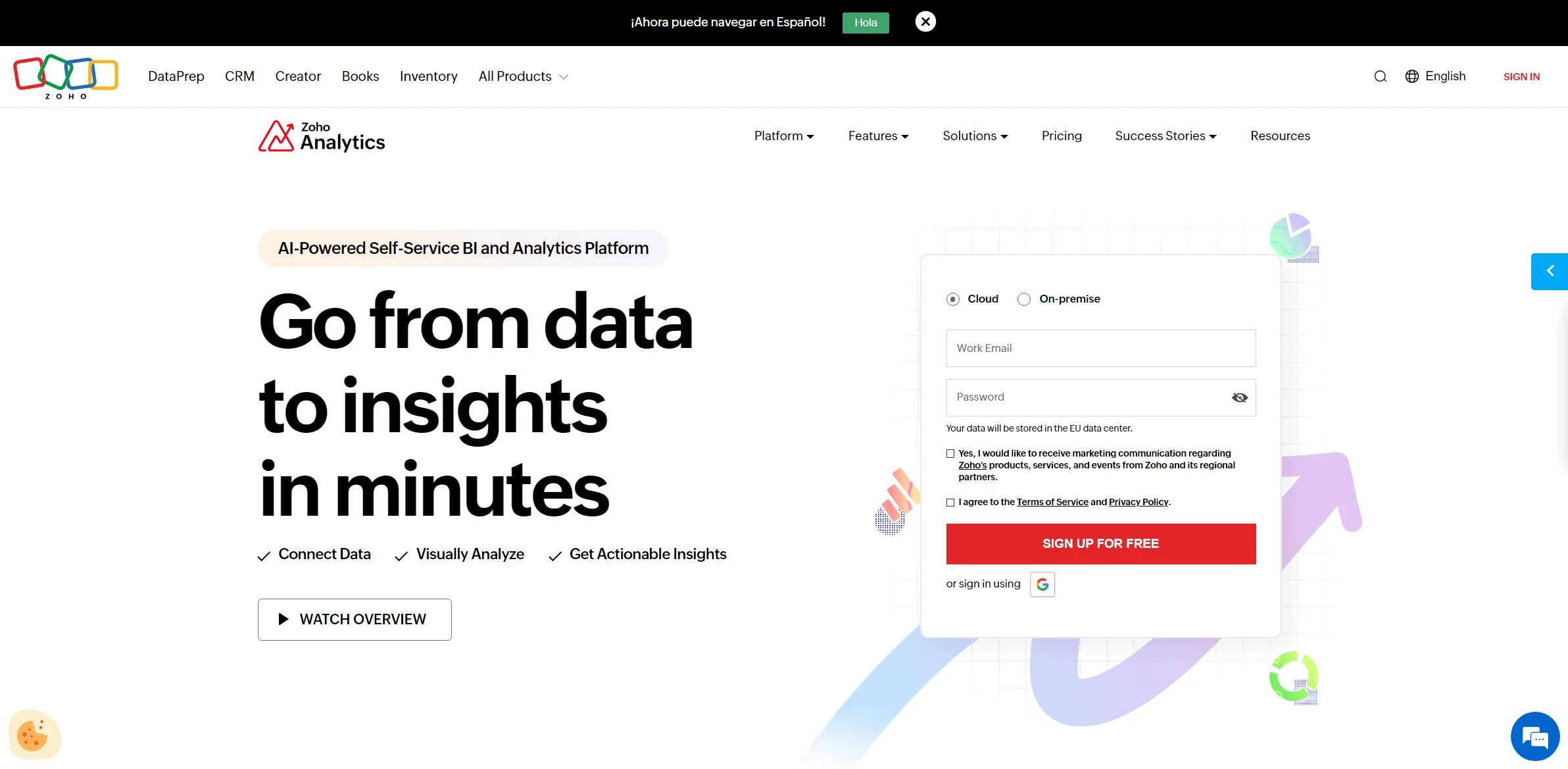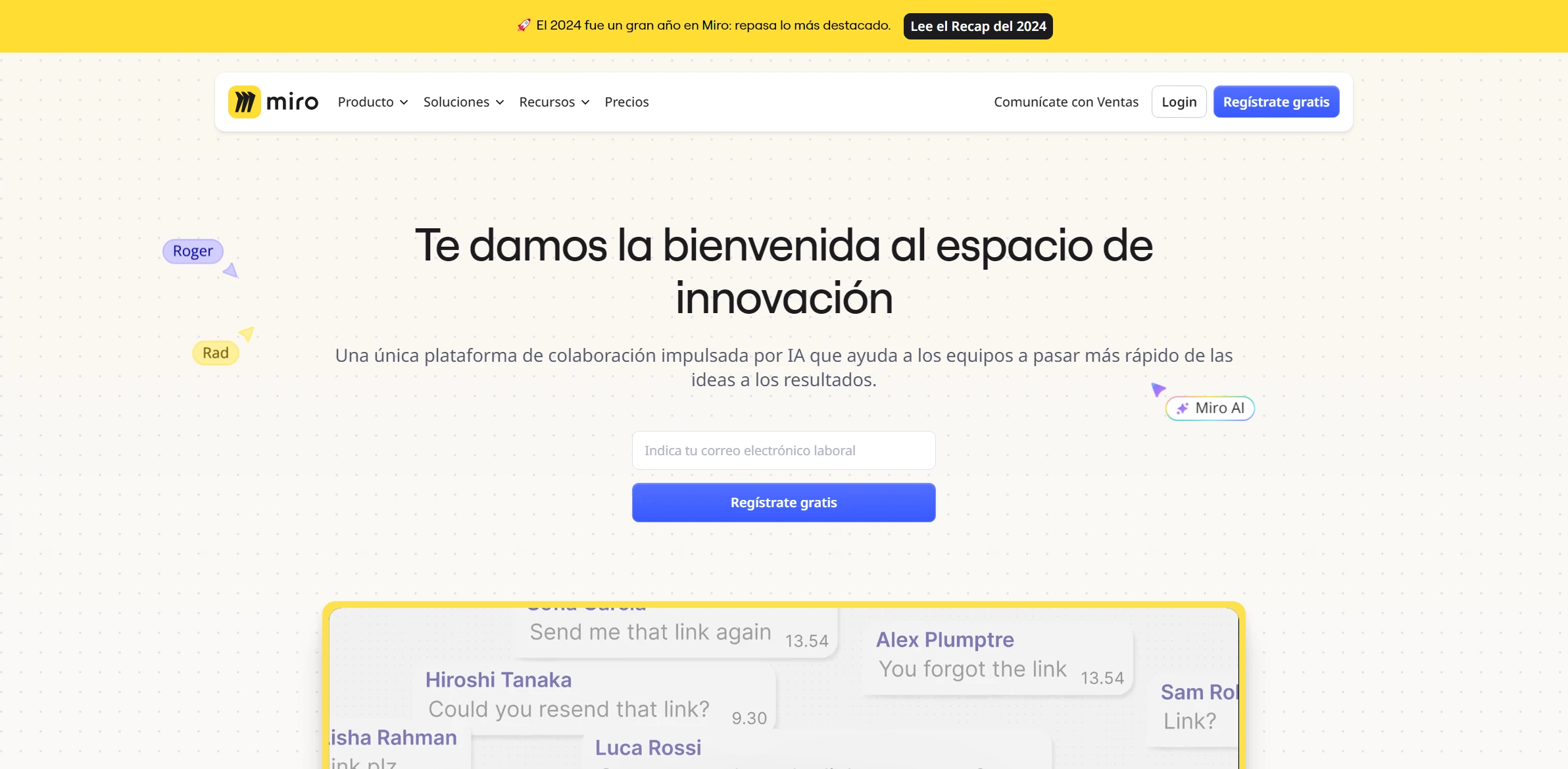Artificial Intelligence Tool Zoho Analytics

DESCRIPTION
Zoho Analytics is a powerful business intelligence and analytics tool that empowers users to transform raw data into insightful reports and visualizations. With its user-friendly interface, businesses can easily connect to various data sources, including spreadsheets, cloud storage, and databases. The platform supports a wide range of data formats, making it accessible for organizations of all sizes. Users can leverage its drag-and-drop functionality to create interactive dashboards and reports without requiring extensive technical knowledge, enabling teams to make data-driven decisions swiftly and effectively.
One of the key functionalities of Zoho Analytics is its AI-powered data analysis feature, known as Zia. Zia can automatically generate insights by analyzing data patterns and trends, allowing users to ask questions in natural language and receive instant answers. This capability significantly reduces the time spent on manual data analysis and enhances the overall efficiency of data interpretation. By utilizing Zia, businesses can uncover hidden insights that might be missed through traditional analysis methods, leading to more informed strategic decisions.
The practical impact of Zoho Analytics and its Zia functionality is profound. Organizations can harness the power of AI to drive their decision-making processes, leading to improved operational efficiency and enhanced competitive advantage. With the ability to visualize data trends and forecast future outcomes, teams can proactively identify opportunities and challenges, ultimately fostering a culture of continuous improvement and innovation. In essence, Zoho Analytics not only simplifies data management but also empowers businesses to leverage data as a strategic asset.
Why choose Zoho Analytics for your project?
Zoho Analytics excels in data visualization and analysis, offering rich, customizable dashboards that facilitate intuitive insights. Its AI-powered anomaly detection identifies trends and potential issues, enabling proactive decision-making. The seamless integration with various data sources, including cloud services and databases, streamlines data consolidation. Unique to Zoho is its collaborative features, allowing teams to share insights in real-time, enhancing teamwork. Practical use cases include sales performance tracking, customer behavior analysis, and financial forecasting, empowering businesses to derive actionable insights. Additionally, its affordability makes advanced analytics accessible for small to medium-sized enterprises, ensuring they remain competitive in data-driven markets.
How to start using Zoho Analytics?
- Sign up for a Zoho Analytics account or log in to your existing account.
- Create a new workspace by selecting the “Create” option and choosing “Workspace.”
- Import your data by selecting the “Import Data” option and choosing the preferred data source (e.g., CSV, Excel, cloud storage).
- Use the drag-and-drop interface to create reports and dashboards by selecting data fields and choosing visualization types.
- Share your reports or dashboards with team members by using the “Share” option and setting appropriate permissions.
PROS & CONS
 User-friendly interface that simplifies data visualization and analysis for all skill levels.
User-friendly interface that simplifies data visualization and analysis for all skill levels. Advanced AI-driven insights that enhance decision-making with predictive analytics.
Advanced AI-driven insights that enhance decision-making with predictive analytics. Seamless integration with a wide range of data sources, making data consolidation effortless.
Seamless integration with a wide range of data sources, making data consolidation effortless. Customizable dashboards that allow users to tailor their analytics experience to specific business needs.
Customizable dashboards that allow users to tailor their analytics experience to specific business needs. Robust collaboration features that enable teams to share insights and reports in real-time.
Robust collaboration features that enable teams to share insights and reports in real-time. Limited integration options with some third-party applications compared to competitors.
Limited integration options with some third-party applications compared to competitors. The user interface may be less intuitive for new users, requiring a longer learning curve.
The user interface may be less intuitive for new users, requiring a longer learning curve. Performance issues can occur with larger datasets, impacting speed and efficiency.
Performance issues can occur with larger datasets, impacting speed and efficiency. Customization options are somewhat restricted compared to other analytics platforms.
Customization options are somewhat restricted compared to other analytics platforms. Customer support response times may not be as quick as those offered by rival systems.
Customer support response times may not be as quick as those offered by rival systems.
USAGE RECOMMENDATIONS
- Familiarize yourself with the Zoho Analytics interface to navigate the tool effectively.
- Utilize the drag-and-drop feature for easy report and dashboard creation.
- Explore the various data connectors to import data from multiple sources seamlessly.
- Leverage the built-in AI capabilities for advanced data analysis and insights.
- Regularly update your data to ensure your reports reflect the most current information.
- Use filters and segmentation to drill down into specific data points for detailed analysis.
- Take advantage of sharing options to collaborate with team members and stakeholders.
- Set up scheduled reports to automate the delivery of insights to your inbox.
- Experiment with different visualization types to find the best way to present your data.
- Access the help documentation and community forums for troubleshooting and tips.
SIMILAR TOOLS

BigML
Transform complex data into clear business actions with this advanced machine learning tool.
Visit BigML
MicroStrategy
Better understand your customers with predictive analytics and advanced segmentation tools powered by AI.
Visit MicroStrategy
Miro
Miro stands out as an advanced solution designed for automating processes with high-quality results. A perfect choice for those who value excellence.
Visit Miro